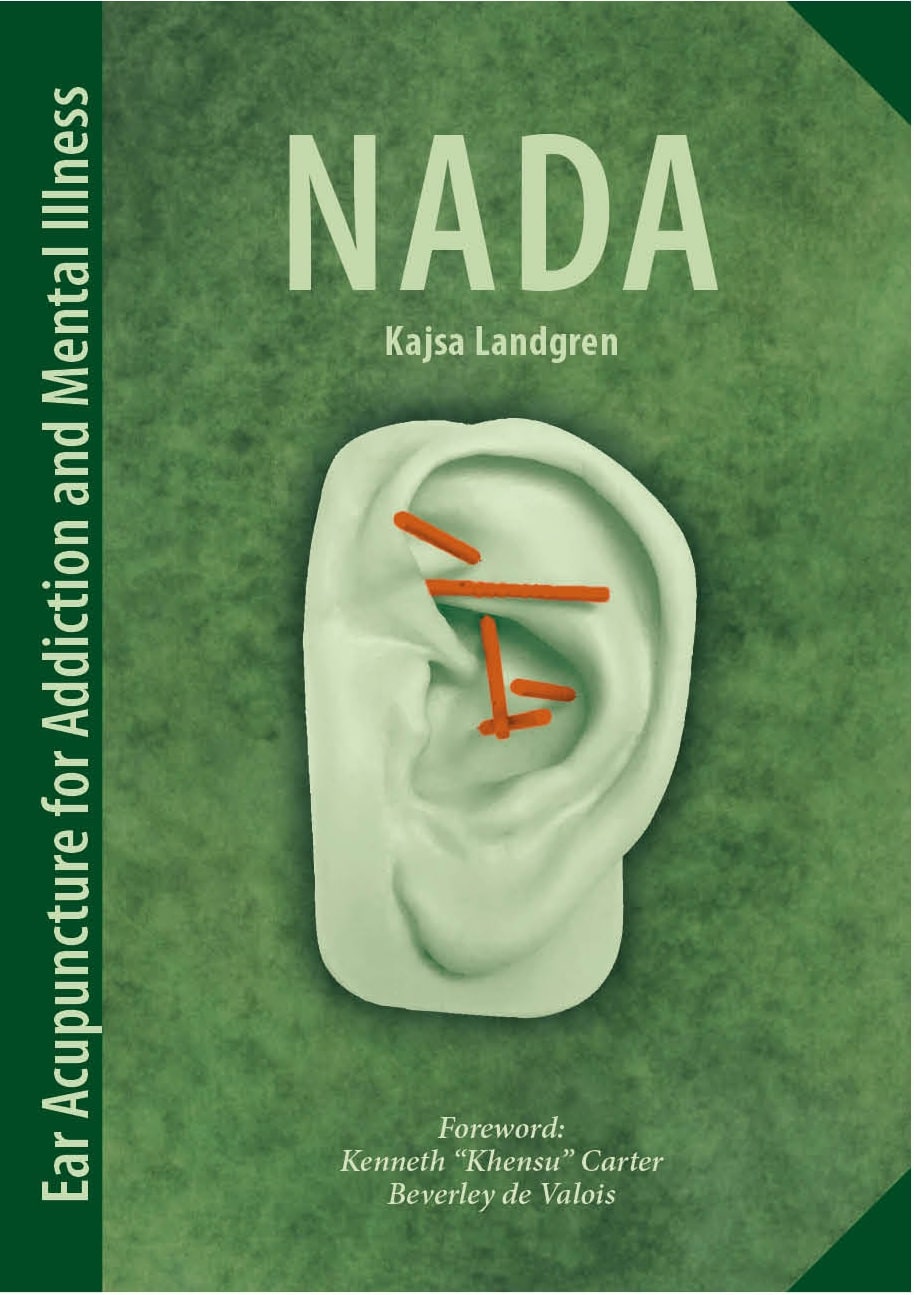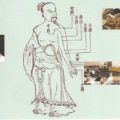An article by Kajsa Landgren
Daith piercing (placing a piercing through the ear’s cartilage, through the inferior part of crus helix, above the external auditory canal opening) has since early 90´s been used not only for decoration but as an alternative treatment to prevent migraine. As the piercing resembles of ear acupuncture, daith may interest acupuncturists.
Does daith piercing prevent migraine?
Researchers and national guidelines conclude that there is a lack of scientific evidence and relate the perceived effect to placebo. According to the American Migraine Foundation (2017), the risks of a daith piercing may far outweigh the reward as there´s a risk for infections like perichondritis. The cartilage has poor blood supply, and it can take from six to nine months for a daith piercing to heal. Non-infective complications include pain, scars and allergic reactions. Information of its effect on migraines spread virally on the internet 2015. The procedure is often done in non-medical facilities, making it difficult to assess the frequency of daith piercing. A chain of piercing studios in the UK reported that they had performed more than 32,000 daith piercings 2015-2022 (Blatchley, 2024). Blatchley who has followed up persons with a daith piercing in a survey is less worried about side effects. He claims that only few infections are reported and that surprisingly many persons don’t feel pain during the daith piercing procedure.
Daith piercing only placebo?
Although authorities are skeptical, many persons with migraine testify in social media about a substantial effect of daith piercing. How about evidence in scientific papers? Searching Pubmed (the largest data base for scientific papers) for “daith piercing” gives only three hits whereof two are case studies. Cascio Rizzo et al. (2017) presented a case study of a 54-year-old male patient suffering from severe migraine. His headaches and medication-overuse substantially improved after bilateral ear daith piercing. Bhandari et al. (2020) presented another well documented case including a 47-year-old female patient suffering from refractory left-sided cluster headache 6-8 times per day. When she no longer could not afford seeing her neurologist, she underwent daith piercing in her left ear at a local tattoo shop. She reported that the headaches completely resolved almost immediately. Years later the headaches returned but now on the right side. Again, the headaches resolved after she had a daith piercing done on the right side and stayed away for two years.
The third hit in Pubmed is a recent narrative review, summarizing the current state of knowledge concerning daith piercing and discussing possible mechanisms (Pradhan et al., 2024). The authors notes the lack of evidence but hypothesize that the described relief of symptoms after daith piercing may be due to neural stimulation that modulate pain pathways. Migraine and tension type headaches might be alleviated due to “activating vagal afferents, leading to the inhibition of neurons in the caudal trigeminal nucleus via the nucleus tractus solitarii”. An association between the auricular mappings and the point for daith piercing that could explain the described effect could be found neither from the perspective of Chinese nor Western auricular systems (Pradhan et al., 2024).
What clinical reports say about Daith Piercing
Although randomized clinical studies on daith piercing are missing, Dr. Chris Blatchley and professor Arnold Wilkins at the London Migraine Clinic reported 2017 on their website a survey conducted with 4500 persons with a daith piercing, showing a marked and long-lasting improvement in migraines (https://migraine-piercing.co.uk). According to the report 75% said their migraines are “greatly improved” or they “no longer have them”. Another finding was that 49% of those who were taking triptans before their piercing were able to stop medication. However, 11% reported “no obvious change”. Blatchley has also presented audits of two series of patients. The results are not published in a medical journal but reported in a PDF available at the internet (Blatchley, 2022). In the first serie, 30 of 42 patients reported a reduction in headache and visual discomfort 1-4 months after piercing. Symptom-free days/month increased from 6.4 to 19.7 days. In a follow up after 12 months the improvement was retained in 9 of the 11 patients who answered. From a scientific perspective, the weakness with this audit is that it is a non-blinded non-controlled trial performed by the author at his migraine clinic which is linked to a piercing studio. In the second serie, 115 patients received temporary stimulation with fine needles as part of pre-treatment assessment, either in the antitragus (which is without vagal connections) or at the daith point (which is innervated by the vagus nerve). Stimulation of the daith point measurably reduced visual discomfort and headache, within one minute, whereas stimulation of the antitragus produced no effect. This supports the hypothesis that vagal stimulation is involved in the effect. There was a further significant reduction in both visual discomfort and other symptoms following therapeutic daith piercing (Blatchley, 2022).
Conclusion
Clinical data reports daith piercing to be a simple and effective treatment, and I fully understand persons suffering from severe migraine who despite limited scientific evidence seek help at a piercing studio! The lack of evidence does not mean that daith piercing has no effect. The effectiveness and safety of daith piercing is unknown until proper research has been conducted. Both body acupuncture, ear acupuncture and non-invasive stimulation methods of the vagus nerve via electrodes placed in the ear have been proven to be effective in reducing migraine, and there is a reasonable hypothesis about the mechanisms of daith piercing. Thus, further research on effect and safety is definitely motivated.
More from K. Landgren:
NADA Ear Acupuncture for Addiction and Mental Illness
ISBN: 9789152743713, 2023, app 200 pages
More information regarding this book > here
References
https://americanmigrainefoundation.org/resource-library/daith-piercings-101/ Retrieved 2024-06-18.
Cascio Rizzo, A., Paolucci, M., Altavilla, R., Brunelli, N., Assenza, F., Altamura, C., & Vernieri, F. (2017). Daith Piercing in a Case of Chronic Migraine: A Possible Vagal Modulation. Frontiers in neurology, 8, 624. https://doi.org/10.3389/fneur.2017.00624
Bhandari, P., Ranjit, E., Sapra, A., Davis, D., & Brenham, C. (2020). Daith Piercing: Wonder Treatment or Untested Fad?. Cureus, 12(2), e6978. https://doi.org/10.7759/cureus.6978
Pradhan, S. K., Gantenbein, A. R., Li, Y., Shaban, H., Lyu, X., Sevik, A., & Furian, M. (2024). Daith piercing: Revisited from the perspective of auricular acupuncture systems. A narrative review. Headache, 64(2), 131–140. https://doi.org/10.1111/head.14672
Blatchley, Christopher. Daith ear piercing, vagus nerve stimulation and the treatment of migraine headaches An audit of the effect of a Daith piercing on migraines over time. (PDF). London Migraine Clinic. Available from:https://www.researchgate.net/publication/360014779_Daith_ear_piercing_vagus_nerve_stimulation_and_the_treatment_of_migraine_headaches_An_audit_of_the_effect_of_a_Daith_piercing_on_migraines_over_time[accessed Jun 18 2024].

Spezialist für Fachbücher aus Akupunktur, Traditioneller Chinesischer Medizin, Qigong, Naturheilverfahren, Homöopathie und Physiotherapie. Jährlich auf vielen, wichtigen Kongressen wie der TCM-Kongress in Rothenburg, dem ASA-Kongress und dem Tao-Kongress in Österreich vertreten. Seit Jahren Verlagsleiter eines Verlages für TCM, Akupunktur und Homöopathie.







